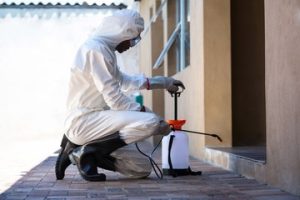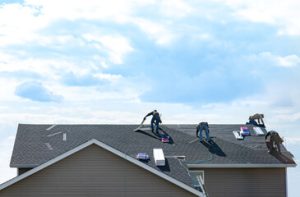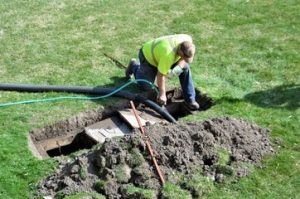Installing a septic tank is one of the most important steps in establishing a reliable and efficient wastewater management system for any residential or commercial property. Whether constructing a new building or replacing an outdated system, proper septic tank installation ensures long-term sanitation, environmental protection, and daily convenience. Because the process involves soil evaluation, precise measurements, regulatory compliance, and specialized tools, it requires expertise and a structured approach. Understanding how Septic Tank Installation Brighton works—and why quality matters—helps property owners make more informed decisions and protect their investment for years to come.

A well-installed septic system operates quietly in the background, continuously processing wastewater to keep a property clean and functional. But when the installation is rushed, poorly designed, or improperly executed, it can create issues such as sewage backups, foul odors, groundwater contamination, and expensive structural damage. That is why dependable septic tank installation services are essential. With the right professionals, every step from site assessment to system testing is handled with accuracy and care, guaranteeing long-term performance and compliance with environmental standards.
Before the installation begins, a thorough site evaluation is necessary to determine the right type of septic system for the property’s soil and layout. The soil must be able to absorb and filter wastewater safely, which is why percolation tests and soil classification are crucial. Installers analyze the land slope, groundwater depth, and available space to ensure that the septic tank and drain field function correctly and meet regulatory requirements. These early assessments set the foundation for a successful installation and prevent costly problems in the future.
One of the key components of septic tank installation is choosing the right tank material and size. Property owners often select concrete, fiberglass, or polyethylene tanks, depending on their budget, durability needs, and soil conditions. The tank must be large enough to handle the expected wastewater volume while allowing adequate separation of solid waste. In many cases, professionals recommend larger tanks for growing households to reduce the frequency of pumping and maintain optimal system efficiency. Getting the right size from the start is a smart long-term investment.
Once the design and sizing are finalized, excavation work begins. This stage requires precision to dig the right depth and length according to the tank’s specifications. Heavy equipment is used to create a stable, leveled area for the tank. A misaligned or uneven installation can lead to tank shifting, cracks, or drainage issues. Professional installers understand how to prepare the ground to support the tank safely while ensuring that all inlet and outlet pipes are positioned correctly. With proper alignment, the system maintains constant flow and avoids unnecessary pressure buildup.
After excavation, the septic tank is carefully lowered into the trench. This step requires specialized handling to avoid damage to the tank or surrounding soil. Once the tank is placed, installers secure the connections between the tank and the property’s plumbing lines. They also install the drain field, which is essential for filtering and dispersing treated wastewater back into the soil. The drain field layout depends on property size, soil type, and wastewater demand. A well-designed drain field ensures the septic system runs smoothly with minimal maintenance needs.
During installation, ventilation and access points are added to the system to allow oxygen flow and easy access for future pumping and inspection. These features help maintain a healthy bacterial environment inside the tank, which is responsible for breaking down waste naturally. Without proper ventilation, the tank may develop odor issues or become less efficient at processing waste. Access points are also vital for future septic tank pumping, repairs, and routine maintenance.
Before the system is covered with soil, installers perform detailed testing to ensure every component functions correctly. They check for leaks, confirm proper water flow, and verify that the drain field is dispersing water evenly. Testing is an important step because it allows issues to be corrected before the system is sealed underground. Once everything passes inspection, the tank and the rest of the system are backfilled with soil, and the installation process is complete.
When homeowners or property managers choose reliable septic tank installation services, they benefit from expert guidance from start to finish. Experienced installers offer insights about soil preparation, tank sizing, environmental requirements, and long-term care. They ensure that all regulatory standards are met, which helps avoid future fines, environmental hazards, or unnecessary repairs. A quality installation also increases property value, especially in areas where septic systems are common.
While septic tank installation is a major project, it also sets the foundation for decades of efficient wastewater management. To maximize the longevity of a newly installed septic system, property owners should follow simple maintenance steps. Routine pumping, typically recommended every three to five years, keeps the tank from overflowing and protects the drain field from damage. It is also important to avoid flushing harmful materials such as grease, chemicals, and non-biodegradable items, as these can disrupt bacterial balance and clog the system. With the right habits, a professionally installed septic tank can last for many decades.
To further understand why professional installation is so important, consider the most common problems that arise from poor workmanship. Improper excavation, for example, can cause the tank to settle unevenly and create fractures. Incorrect pipe placement can result in sewage backups or slow drainage inside the property. Insufficient drain field sizing can overwhelm the soil, causing standing water and unpleasant odors. These issues often lead to expensive repairs and environmental health concerns. By hiring qualified experts from the beginning, property owners avoid these risks.
Here are two examples of critical installation steps that require professional expertise:
- Accurate Soil Testing and System Design
- Soil composition affects how efficiently wastewater drains. Professionals conduct precise tests to calculate absorption rates and determine the best system layout.
- Proper Drain Field Construction
- The drain field must be carefully constructed to ensure even water distribution. Errors in this stage can cause flooding, backups, and system failure.
These steps highlight why septic tank installation requires technical skill and experience. Skipping or rushing them can lead to long-term functional and environmental problems.
Another important advantage of professional septic tank installation is compliance with environmental standards. Wastewater mishandling can contaminate nearby soil, water sources, and ecosystems. Professionals ensure that tank placement follows guidelines to prevent contamination and promote safe waste filtration. This environmental protection is essential not only for property owners but for surrounding communities and natural habitats.
After installation, property owners should be aware of the early signs of septic system issues. Slow drains, wet patches in the yard, gurgling sounds in plumbing, or unpleasant smells can indicate that the system needs attention. Catching these signs early helps avoid larger problems and ensures that the system continues to function efficiently. Having access to a reliable septic service provider makes it easier to schedule maintenance, inspections, and pumping when needed.
Although septic tank installation is a significant investment, it offers long-term savings compared to other wastewater solutions. A well-installed and properly maintained septic system reduces the risk of frequent repairs, water contamination issues, and property damage. It also functions independently from municipal sewer systems, giving property owners more control over their wastewater management and long-term utility expenses.
As demand for sustainable wastewater solutions increases, modern septic systems have become more advanced and more efficient. Today’s systems are designed to handle higher volumes, withstand harsh soil conditions, and promote better waste breakdown. Professional installers stay updated on the latest technology to ensure property owners receive durable, safe, and high-performing systems tailored to their needs.
In summary, septic tank installation is a multi-step process that requires technical knowledge, careful planning, and professional execution. From soil testing and tank selection to excavation, system assembly, and final testing, each stage plays a critical role in the system’s long-term success. Property owners who invest in expert installation services benefit from reliable wastewater management, increased property value, environmental safety, and long-lasting performance.
Ultimately, choosing experienced professionals for septic tank installation is the best way to ensure that the system operates efficiently for many years. With proper sizing, design, installation, and ongoing maintenance, a septic tank becomes a dependable and sustainable wastewater solution that supports daily living and protects the environment. Whether for new construction or system replacement, investing in quality installation is a decision that pays off through enhanced durability, safety, and peace of mind.





